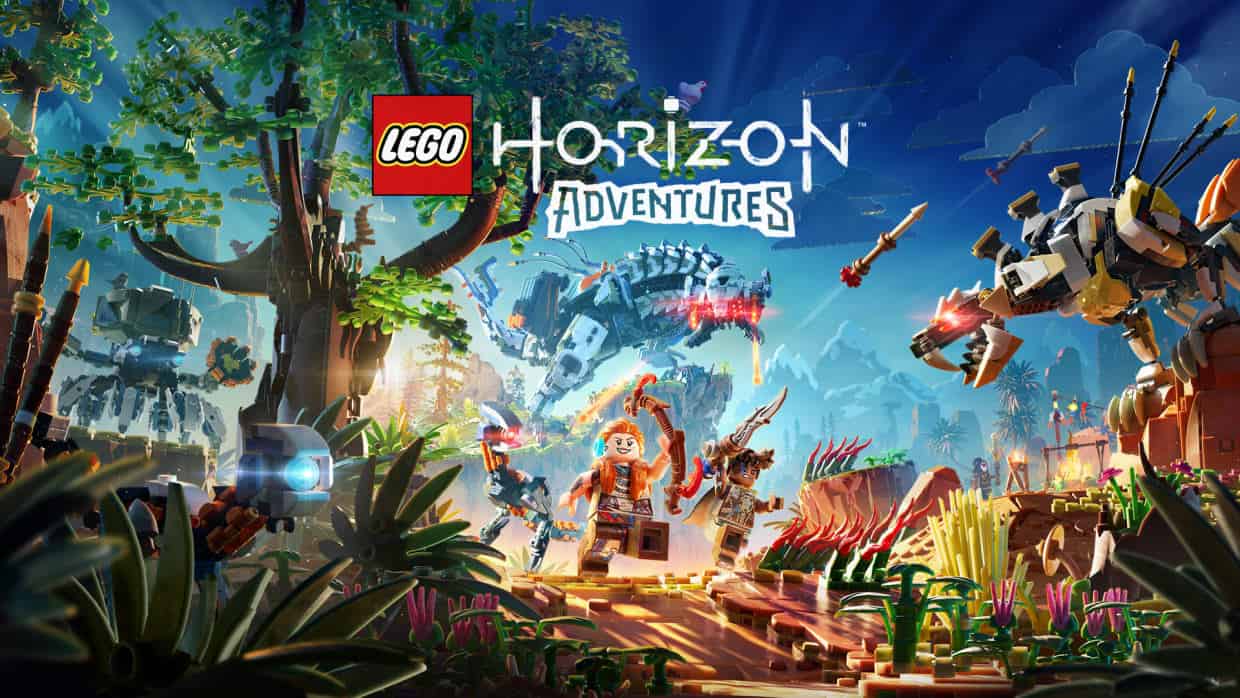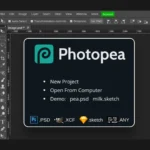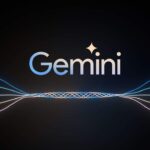LEGO Horizon Adventures has been all the talk in gaming forums all over and some major developments have been drawing a lot of attention. One interesting topic is the lack of the popular ‘Mumble Mode’ found in many previous LEGO games. Developers Guerrilla Games and Studio Gobo want to reach a wider audience, leading to mixed opinions about the game’s design and overall experience. LEGO Horizon Adventures promises an exciting adventure in the world of Horizon, but it will launch without features like “Mumble Mode” and dedicated PS5 Pro support. This article looks at these choices, focusing on core gameplay and accessibility.
It also mentions the possibility of future updates and the growing Horizon universe. The absence of ‘Mumble Mode’, along with repetitive gameplay and technical issues, has left many wondering if future games in the Horizon universe will be more engaging and varied. As with any new series, the discussions around this release could significantly impact both the LEGO and Horizon franchises moving forward.
Exploring the World of Horizon, Brick by Brick
Lego Horizon Adventures is set to bring the vibrant world of Horizon Zero Dawn and Forbidden West to life in Lego form. This action-adventure game, developed by Guerrilla Games and Studio Gobo, promises a family-friendly experience filled with exploration, puzzle-solving, and exciting battles against robotic creatures. However, the game will launch without certain features, including Lego’s popular “mumble mode” and specific PS5 Pro support.
No “Mumble Mode” at Launch
“Mumble mode,” a feature that modifies your voice to sound like the gibberish spoken by Lego minifigures, won’t be included in Lego Horizon Adventures at launch. While this might disappoint some fans, the developers likely decided to focus on other aspects of the game.
No Dedicated PS5 Pro Support
Lego Horizon Adventures will not have specific PS5 Pro support at launch. This means it won’t fully utilize the console’s enhanced hardware. However, it will offer Fidelity and Performance modes for both PS5 and PS5 Pro users. Fidelity mode prioritizes visuals with sharper textures and better lighting, while Performance mode aims for smoother gameplay at 60 frames per second.
Prioritizing Core Gameplay
The decision to omit “mumble mode” and forgo PS5 Pro support at launch suggests a focus on core gameplay mechanics and accessibility across all platforms. This strategy ensures a polished experience for the widest possible audience, including players on PS5, PC, and Nintendo Switch.
Potential for Future Updates
While these features are absent initially, they could be added in future updates. Developers often add features and enhancements post-launch based on player feedback and demand. This approach allows them to address any critical issues at launch and expand the game with additional content later on.
Gameplay Features
Lego Horizon Adventures offers a variety of gameplay features:
- Open World Exploration: Explore a vast Lego recreation of the Horizon world, filled with familiar locations and iconic machines.
- Character Customization: Create and customize your own Lego character.
- Building and Crafting: Use Lego bricks to build and solve puzzles, create vehicles, and overcome obstacles.
- Combat: Engage in exciting battles against robotic creatures using a variety of weapons and abilities.
- Storyline: Experience a new story set in the Horizon universe, featuring familiar characters and locations.
Horizon’s Expanding Universe
Lego Horizon Adventures is part of a growing multimedia expansion of the Horizon universe. This includes:
- Horizon Zero Dawn (2017) and Horizon Forbidden West (2022): Critically acclaimed action RPGs developed by Guerrilla Games.
- Horizon Call of the Mountain (2023): A VR spin-off title for PlayStation VR2.
- Horizon TV Series (in development): A Netflix series based on the Horizon games.
These projects demonstrate the popularity and potential of the Horizon franchise, expanding its reach to new audiences and platforms.
Short Summary:
- The absence of ‘Mumble Mode’ in LEGO Horizon Adventures has surprised fans.
- Critics are pointing to a lack of creativity compared to previous LEGO games.
- PS5 Pro support is missing at launch, raising questions from players about graphical capabilities.
As interest in LEGO Horizon Adventures grows, many fans and players have speculated about the decision not to integrate ‘\Mumble Mode\‘—a feature that allows characters to communicate in quirky, indistinct mumbling. The absence of this fan-favorite option is particularly striking, given the long-standing LEGO tradition of light-hearted humor and playful storytelling found in previous titles. While ‘Mumble Mode’ has been a staple across numerous LEGO games, the development team chose to prioritize a different experience, one that they believe will appeal to a wider and younger audience.
Reflecting on this choice, Guerrilla Games’ narrative director James Windeler articulated the team’s mission: “When we approached this game, we wanted to make sure that it was for everyone. That philosophy has informed every creative decision,” he stated during an interview. This statement reflects the developers’ aim to make the game more accessible, especially for younger players who may not resonate with the traditional elements LEGO fans have come to expect.
However, this intention has resulted in criticism from players who lament the loss of the charm associated with previous LEGO games. Critics point out the game’s stark deviation from established LEGO gameplay, noting its lack of depth and engagement.
As players navigate through the LEGO rendition of the beloved Horizon universe, many have felt that the game lacks the immersive qualities that made prior LEGO adaptations so successful. Unlike acclaimed titles such as LEGO Star Wars, which offers numerous collectibles and interactive environments, LEGO Horizon Adventures introduces a linear gameplay structure that may leave some players yearning for more. Many argue that it feels more like a basic tech demo than a fully realized game experience. One reviewer summarized their thoughts succinctly, claiming the game is a “confusing mash-up of assets” that fails to form a cohesive narrative or engaging mechanics.
The Price of Admission
Not only have players expressed discontent with the gameplay, but the game’s price point has also sparked controversy. Priced at $59.99 for the standard edition, many feel that such a cost is unjustifiable for what has been labeled as a more elementary gaming experience. This pricing, juxtaposed against the perceived quality of content, has left many in the community feeling alienated, questioning whether the developers value established fans or are merely targeting new audiences.
Considering a wider market appeal, including a launch for both PC and Nintendo Switch, the approach to development seems dictated by market trends rather than the loyal player base that has supported Horizon for years—and many feel that this has injured the game’s artisanal quality.
The Vision Behind the Game
Interestingly, the developers have claimed that ‘LEGO Horizon Adventures’ represents a deliberate attempt to carve out its own identity. However, players remain skeptical. A significant divergence from the Horizon Zero Dawn storyline raises questions about the necessity of the game’s association with the franchise at all. Critics have pointed out that many of the levels could have been transitioned easily into a generic LEGO title devoid of the Horizon branding.
Critics have commented on the game’s structure, describing it as resembling a rogue-like experience where each level requires retracing previously trodden paths, with minimal progression or exploration incentives. This design choice has resulted in a monotonous grind, reducing the vast potential of the vibrant Horizon world to mindless repetition.
“You’re not getting Zero Dawn’s greatest hits in LEGO form… It’s just mindless plodding, one foot in front of the other.”
Moreover, players have noted that even the most creative aspects of the game—such as unique weapons and gadgets—lack the cohesion and charm typically associated with LEGO gameplay. Many items drop randomly, leading to a disorganized inventory system that detracts from gameplay rather than enhancing it. One particularly bizarre inclusion was the ability to acquire a “Hot Dog Stand” that drops explosives; this underlines a growing dissonance between the characters and gameplay elements that would typically relate closely in a conventional LEGO experience. One reviewer stated, “Rare weapons… seem more like a jumbled assortment than thoughtfully curated items,” echoing the let’s-make-it-work philosophy that seems to resonate throughout this game’s development process.
Visuals vs. Performance
While the gameplay has received significant backlash, visually, the game is undeniably impressive. Players rave about the stunning graphical fidelity and beautiful lighting effects present throughout the game’s environment. However, despite these appealing graphics, complaints have emerged about the game running poorly on the PS5 and particularly on the base console.
The lack of support for the PS5 Pro has frustrated players who were hoping for enhanced graphical performance. Instead, the game offers only “fidelity” and “performance” modes, both of which do not provide the seamless experience that next-generation console players seek. Although the “fidelity” mode offers improved textures, frame rate drops have been a frequent complaint. This has resulted in an experience plagued by interrupted flow and obstructive load screens, prompting players to wonder what strategic decisions led to this oversight.
“In a 2024 game… and it can’t even run properly on the base console it’s designed for.”
Performance dips are compounded during local co-op play, where disconnection and teleportation often disrupt the gaming experience. These interruptions strike at the heart of gameplay, curtailing the enjoyment that comes with collaborative play—a facet many players eagerly anticipate in the LEGO franchise. While online co-op offers some reprieve, the limitations still leave players feeling let down by what should have been a defining feature of the game.
The Reaction from the Community
The gaming community’s reaction has been mixed. While some are optimistic about the game’s visual aesthetic and the attempt to introduce a younger audience to the Horizon storyline, the overwhelming sentiment among established fans is one of disappointment. Many express concern that this release signals a broader trend within the gaming industry, where accessibility is prioritized over the intricacy and depth that used to define beloved franchises.
The chatter around LEGO Horizon Adventures echoes a collective unease about where beloved franchises are headed in response to consumer trends. Many players worry that as large studios chase after broader market appeal, they might lose their loyal support base in the process. Some critics have expressed disappointment that the relentless push towards inclusivity has resulted in a dilution of the characteristic traits that make LEGO games enjoyable at their core.







